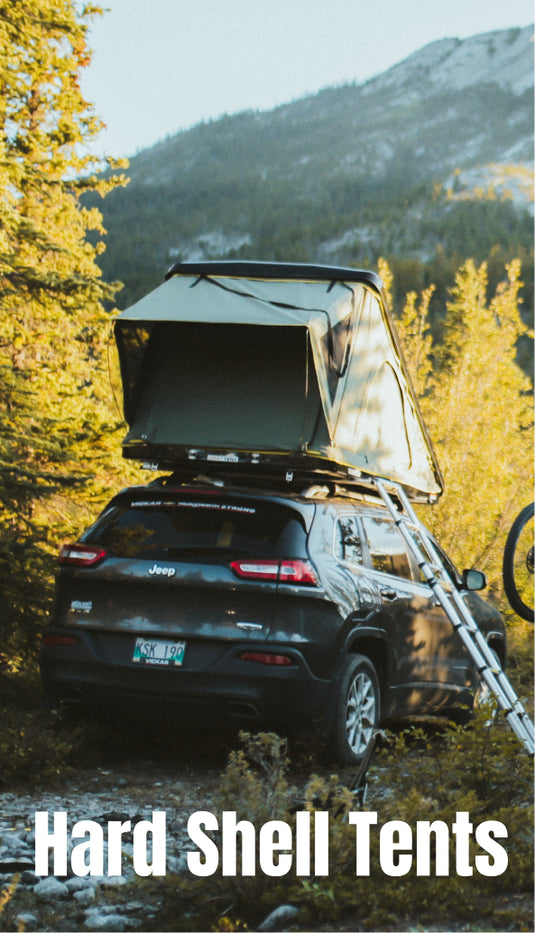The roof rack market is like an overlanding adventure—always evolving, innovating, and getting more exciting. A lot of key players and brands dominate the sector, but Prinsu and Front Runner probably battle for the best roof rack. So, which between these two is the right overland rack for your SUV, truck, or sedan? Let’s find out.
Prinsu Roof Racks

First up is the renowned Prinsu roof rack. Based in the U.S. This manufacturer is known for its ability to produce a high volume of quality vehicle racks at a fair price point. A lot of customers praise Prinsu for delivering vehicle specific roof racks and accessories in a timely (or even early) manner. This is probably the reason why they are one of the best-selling roof rack manufacturers in the country, in an industry that typically has product lead times.
- Design - Prinsu is also a prominent name in creating low-profile roof rack designs that are custom-built for specific vehicle models. Prinsu’s racks practically contour the roof of your vehicle, giving it a sleeker look. To this day, they have perfected their designs and continue to make new racks for various vehicle types. This industry leader has created roof racks that are great for Toyota Tacoma, 4runner, Rav4, Land Cruiser, Tundra, Lexus, Chevy Colorado, Subaru, Rams, Ford, and Mercedes Sprinter.
- Wind Deflector and Light Bar Cutout - Another significant advantage of a Prinsu roof rack over Front Runner and other brands is that it already comes with a wind deflector. While wind deflectors or silencers can be added to a Front Runner, it usually comes as an accessory at an additional cost. Buyers also have the option to purchase Prinsu roof racks with a lightbar cutout for easy lighting installation.
- Crossbar and Siderail Channels - Prinsu comes with slotted channels on its sides—which makes it convenient for you to attach other accessories like light pods or grab handles. In comparison, to attach a light pod for instance to the side of a Front Runner rack, you may have to make a few holes or use brackets. Lastly, Prinsu’s roof bars have two channels compared to Front Runner’s one. These channels make whatever you’re mounting to your roof rack extra secure.
Prinsu Roof Rack Cons
The only downside of a Prinsu roof rack we’ve found is only based on the customers’ preference. Some overlanders wish that Prinsu roof racks feature a more basket-like form, which Front Runner roof racks are characterized with. They find the difference in design a minor one, as it relates more to appearance rather than functionality.
Front Runner Roof Racks

Another notable (and bigger) roof rack maker is Front Runner. A South African company, this adventure travel gear creator has marked a solid reputation in the overlanding sector. They are famous for their dependable, durable, and varied equipment. Their products range from a huge selection of roof racks, bed racks, and bed bars. They also offer a ton of rack accessories for your kayaks, canoes, boards, fishing gears, etc.
Front Runner Roof Racks Pros
- Strength and Rigidity - Front Runner racks are rigid, which is ideal for supporting awnings and roof top tents. Their design resembles a modular basket-like form that caters to bulky loads—claiming to hold up to 660 lbs of cargo. Front Runner also created a new roof rack that fairs well with Prinsu in terms of having a low-profile design—their Slimsport Roof Rack. Their Slimsport racks are vehicle specific and offer a lightbar cutout, making this version very competitive against Prinsu. Their traditional Slimline II rack also offers lightbar mounting, but the bar typically hangs below the rack, giving it a less aerodynamic design.
- Aesthetics and Extra Storage - The Slimline II sits a little higher on top of your vehicle, compared to Prinsu. While some consider that as a disadvantage for aerodynamics reasons, it has its own benefits too. The taller clearance between the rack and your car makes a good extra storage for camping essentials like folding tables and chairs. Aesthetics-wise, the taller appearance of the roof rack also makes your car look beefier and more robust.
- Limitless Accessories - Just like Prinsu, Front Runner roof racks are mostly always available. Despite being an international company, users voice out satisfaction with Front Runner’s product delivery timelines. Their winning asset is probably the vast array of available accessories they have. Most patrons say that whatever add-ons you can think of for your roof rack, Front Runner already has one created for you. For instance, they make cargo boxes, tie down rings, quick-release tent mount kits, canoe/kayak carriers, and a lot more—all in the aim of enhancing the campers’ experience.
Front Runner Roof Racks Cons
The most obvious drawback of a Front Runner over Prinsu is the additional price of installing a full sized wind fairing, which can cost a couple more hundred dollars (though their Slimline II racks do come with a small wind deflector. Also, other customers site the higher-profile design to add more drag on their vehicles.
Side-by-Side Prinsu and Front Runner Roof Rack Comparison
|
Prinsu |
Front Runner |
|
|
Country of Origin |
United States |
South Africa |
|
Price |
$$ |
$$$ |
|
Design |
Low-profile |
Basket-like form |
|
Wind Deflector |
Included |
Additional cost for a full sized fairing |
|
Accessories |
some |
most |
Conclusion
Both Front Runner and Prinsu roof racks are proven and tested brands. They offer easy and straightforward bolt-on installation and endless mounting capabilities. They showcase great features that distinguish and better them from each other. Surely, there is no wrong choice between these two.

